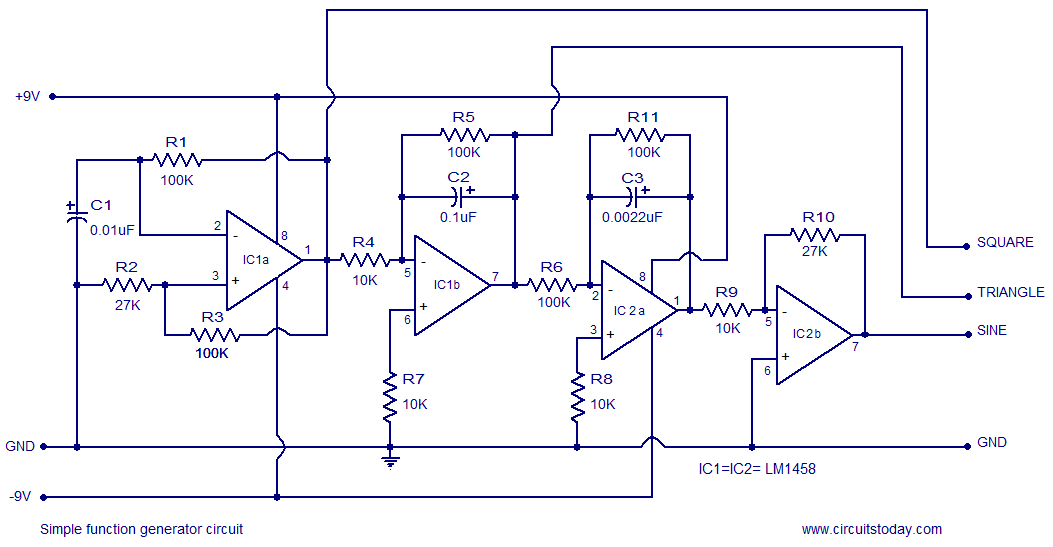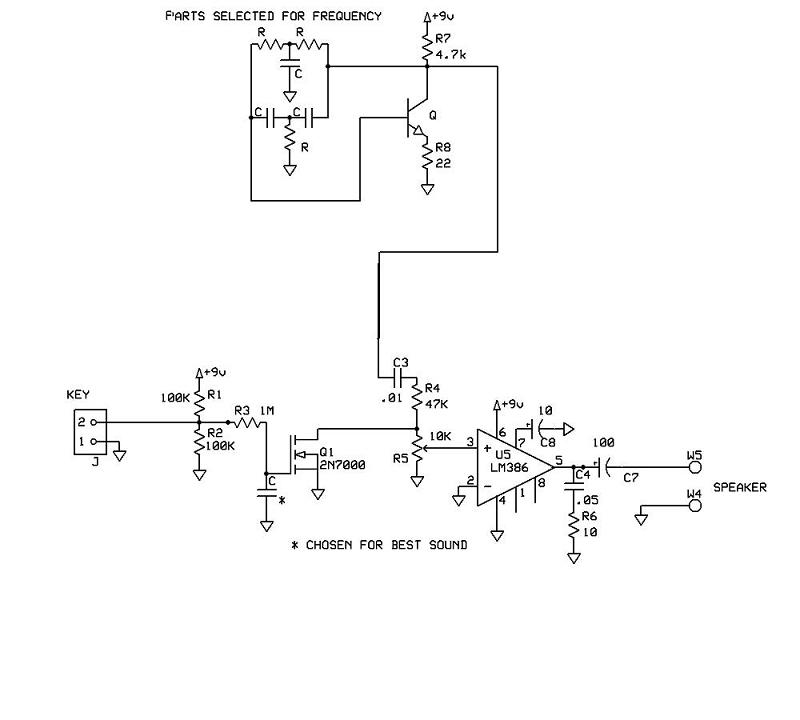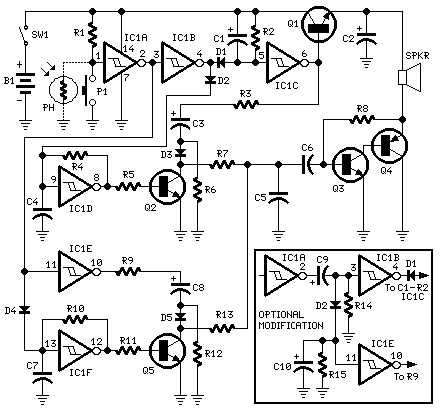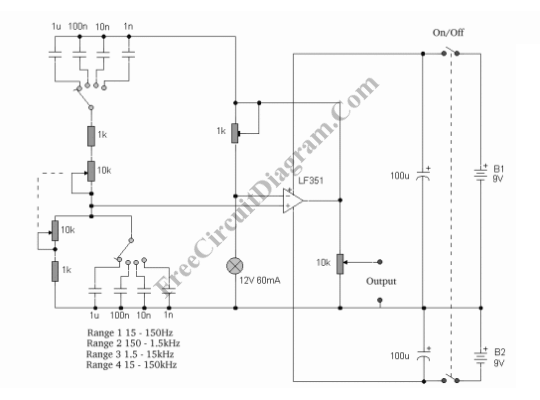
Triangular Wave Generator
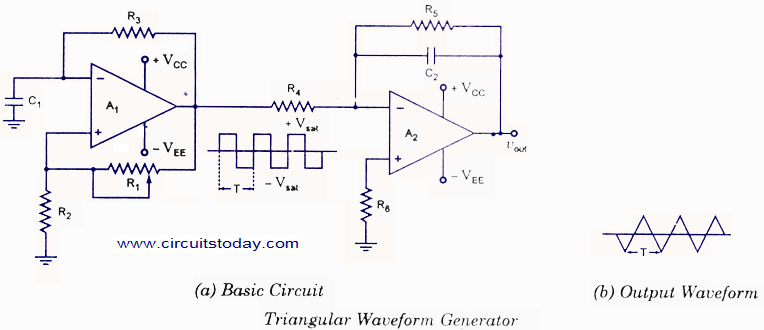
A triangular wave generator utilizing an operational amplifier (op-amp) is presented. The theoretical foundation and operation of the circuit diagram are discussed. The integration of a square wave signal results in the generation of a triangular wave. A practical circuit diagram for the triangular wave generator is included.
The triangular wave generator circuit typically employs an op-amp in an integrator configuration. The fundamental principle involves generating a square wave signal, which is then fed into the input of the integrator circuit. The op-amp integrates this square wave, producing a triangular wave output.
In the circuit, the op-amp is connected with feedback that includes a capacitor and a resistor. The square wave input is applied to the non-inverting terminal of the op-amp. The integration process occurs as the op-amp outputs a voltage that ramps up and down, corresponding to the square wave's high and low states. The output voltage increases linearly during the positive half-cycle of the square wave and decreases linearly during the negative half-cycle, resulting in a triangular waveform.
The frequency of the triangular wave is determined by the frequency of the input square wave and the RC time constant, which is defined by the resistor and capacitor values in the feedback loop. Adjusting these components allows for the tuning of the triangular wave's characteristics, including its amplitude and frequency.
To construct a practical triangular wave generator, a suitable op-amp such as the LM741 can be used. The circuit should also include power supply decoupling for stability and noise reduction. The output can be further processed or utilized in various applications, such as waveform generation for signal processing, modulation, or testing purposes.
In summary, the triangular wave generator circuit based on an op-amp provides a reliable method for generating triangular waveforms through the integration of square wave signals, with practical applications across various electronic systems.Triangular wave generator using opamp. Circuit diagram theory and working. Integrating square wave produces a triangular wave. Practical circuit diagram of triangular wave generator.. 🔗 External reference
The triangular wave generator circuit typically employs an op-amp in an integrator configuration. The fundamental principle involves generating a square wave signal, which is then fed into the input of the integrator circuit. The op-amp integrates this square wave, producing a triangular wave output.
In the circuit, the op-amp is connected with feedback that includes a capacitor and a resistor. The square wave input is applied to the non-inverting terminal of the op-amp. The integration process occurs as the op-amp outputs a voltage that ramps up and down, corresponding to the square wave's high and low states. The output voltage increases linearly during the positive half-cycle of the square wave and decreases linearly during the negative half-cycle, resulting in a triangular waveform.
The frequency of the triangular wave is determined by the frequency of the input square wave and the RC time constant, which is defined by the resistor and capacitor values in the feedback loop. Adjusting these components allows for the tuning of the triangular wave's characteristics, including its amplitude and frequency.
To construct a practical triangular wave generator, a suitable op-amp such as the LM741 can be used. The circuit should also include power supply decoupling for stability and noise reduction. The output can be further processed or utilized in various applications, such as waveform generation for signal processing, modulation, or testing purposes.
In summary, the triangular wave generator circuit based on an op-amp provides a reliable method for generating triangular waveforms through the integration of square wave signals, with practical applications across various electronic systems.Triangular wave generator using opamp. Circuit diagram theory and working. Integrating square wave produces a triangular wave. Practical circuit diagram of triangular wave generator.. 🔗 External reference
